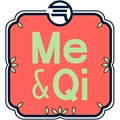Acid Refluxaccording to TCM
Symptom family: Reflux Symptoms
Did you mean? Stomach Acidity Gastroesophageal Reflux Disease
What is Acid Reflux?
Acid reflux, commonly experienced as a burning sensation in the chest or throat, occurs when stomach acid flows back into the esophagus. This discomfort, often referred to as heartburn, can be accompanied by sour burping and regurgitation of stomach contents. It's a symptom that can significantly affect daily life, urging many to seek relief.
TCM's Interpretation of Acid Reflux
Traditional Chinese Medicine (TCM) offers a holistic view on acid reflux, attributing it to imbalances within the body's energy pathways. Unlike Western medicine, which often targets the symptoms directly, TCM looks to the root causes of these imbalances, including Qi Stagnation, Heat accumulation, and Qi Rebellion. Understanding the underlying pattern is vital in TCM to tailor an effective treatment strategy.
Identifying the Causes of Acid Reflux in TCM
Acid reflux in TCM can emerge from several disharmonies, notably Qi Stagnation and Heat. Qi Stagnation, particularly of the Rebellious Liver Qi invading the Stomach, leads to symptoms like belching, irritability, and a craving for sour foods.
On the other hand, Heat patterns, such as Stomach Heat or Fire, manifest as sour regurgitation, thirst for cold drinks, and mouth ulcers. TCM delves into these patterns to restore balance and alleviate symptoms.
TCM Solutions for Acid Reflux
To address acid reflux, TCM employs a variety of formulas and herbs designed to harmonize the Stomach, move Qi, and clear Heat. Yue Ju Wan and Ban Xia Hou Pu Tang are recommended for Qi Stagnation, promoting the smooth flow of Qi and alleviating the discomfort associated with acid reflux.
For Heat patterns, Tiao Wei Cheng Qi Tang purges Heat accumulation, providing relief from the fiery symptoms. These treatments are customized based on the individual's specific TCM diagnosis, ensuring a targeted approach to healing.
Acupoint Therapy for Acid Reflux
TCM also utilizes acupoint therapy as a complementary treatment for acid reflux. Points along the Stomach, Bladder, and Directing Vessel meridians, such as Burong ST-19, Ganshu BL-18, and Juque REN-14, are selected for their ability to harmonize the Middle Burner, invigorate Qi and Blood, and subdue Rebellious Qi. This method enhances the effectiveness of herbal treatments and addresses the multifaceted nature of acid reflux.
Through its comprehensive understanding and multifaceted treatment strategies, TCM offers valuable insights and relief for those suffering from acid reflux. By emphasizing balance and harmony within the body, TCM provides a deeply rooted solution to this pervasive condition, showcasing the enduring wisdom of traditional practices in addressing modern health challenges.
Root Causes of Acid Reflux in TCM
Explore below more details about what might cause Acid reflux according to TCM.
Qi Stagnation
Qi Stagnation in TCM is like having a traffic jam in your body's energy system. Qi, the vital life force that flows through your body, is supposed to move smoothly to maintain health and balance. But with Qi Stagnation, this flow gets blocked or slowed down, like cars stuck on a highway. This can lead to symptoms like feeling stressed, emotional mood swings, and physical discomfort, often described as a feeling of fullness or tightness, especially in the chest or abdomen. It's as though the body's internal energy circulation is disrupted, causing various issues. TCM sees this as an energy flow problem, different from modern medicine's focus on specific physiological processes.... see more
Qi Stagnation Patterns That Can Lead to Acid Reflux
Common Symptoms: Belching Depression Irritability Lack Of Appetite Abdominal Distention Upper Abdominal Distension Dry Mouth Craving For Sour Foods
| Pattern Name | Relevant Symptoms | Relevant Formulas |
|---|---|---|
| Qi Stagnation | Acid reflux, General fullness, Moving pain, Depression, Irritability, Mood swings, Sighing | Yue Ju Wan |
| Liver Qi Stagnation invading the Stomach | Acid reflux, Belching, Abdominal distention, Upper abdominal distension, Depression, Irritability, Dry mouth, Lack of appetite, Craving for sour foods, Dry throat, Vomiting undigested food... see more | Ban Xia Hou Pu Tang | Zuo Jin Wan |
Qi Rebellion
Rebellious Qi in TCM is a bit like having a rebel inside your body. Qi, which is the vital energy flowing through your body, is supposed to move in certain directions to keep everything in balance and working well. But with Rebellious Qi, this energy decides to go the opposite way. Think of it like a river flowing upstream instead of downstream. This can cause various issues like heartburn, coughing, or even headaches. It's as if the body's natural flow is disrupted, creating a kind of internal chaos. TCM focuses on correcting this flow, restoring order and balance.... see more
Qi Rebellion Patterns That Can Lead to Acid Reflux
| Pattern Name | Relevant Symptoms | Relevant Formulas |
|---|---|---|
| Rebellious Liver Qi invading the Stomach | Sour regurgitation, Irritability, Upper abdominal pain, Upper abdominal distension, Hypochondriac pain, Hypochondriac distention, Upper abdominal oppression, Acid reflux, Hiccups, Belching, Nausea or vomiting, Sighing, Weak limbs... see more | Ban Xia Hou Pu Tang | Xuan Fu Dai Zhe Tang | Si Mo Tang | Ju Pi Zhu Ru Tang | Ding Xiang Shi Di Tang |
Heat
In TCM "Heat" signifies an excess of Yang energy, leading to an imbalance where heat predominates over the body's cool Yin aspects. This condition is metaphorically akin to an internal over-heating. Symptoms indicative of Heat can include feelings of warmth, fever, sweating, irritability, red face, thirst with a preference for cold drinks, and a rapid pulse. The tongue may appear red with a yellow coating. Unlike the common interpretation of heat in terms of temperature, in TCM, it represents a state of hyperactivity or inflammation in the body.... see more
Heat Patterns That Can Lead to Acid Reflux
| Pattern Name | Relevant Symptoms | Relevant Formulas |
|---|---|---|
| Stomach Heat or Fire | Sour regurgitation, Upper abdominal burning pain, Excessive thirst, Craving for cold beverages, Restlessness, Dry stools, Dry mouth, Mouth ulcers, Acid reflux, Nausea, Vomiting after eating, Excessive hunger, Bad breath, Feeling hot, Acne... see more | Tiao Wei Cheng Qi Tang | Qing Wei San | Xie Huang San | Fei Er Wan | Hua Ban Tang |
Stomach
In TCM the Stomach is regarded as the "sea of nourishment," pivotal for digesting food and transforming it into Qi and blood. It works closely with the Spleen to distribute these essential nutrients throughout the body. When the Stomach is out of balance or malfunctions in TCM, it often leads to digestive problems such as bloating, nausea, vomiting, poor appetite, or a feeling of fullness. There may also be issues like acid reflux or a sour taste in the mouth. Emotionally, an imbalanced Stomach can contribute to excessive worry and overthinking, reflecting the TCM belief that physical and emotional well-being are deeply interconnected.... see more
Stomach Patterns That Can Lead to Acid Reflux
Common Symptoms: Belching Irritability Upper Abdominal Distension Dry Mouth Lack Of Appetite Nausea Bad Breath Abdominal Distention
| Pattern Name | Relevant Symptoms | Relevant Formulas |
|---|---|---|
| Food Stagnation in the Stomach | Sour regurgitation, Epigastric fullness and pain relieved by vomiting, Nausea, Vomiting of sour fluids, Bad breath, Acid reflux, Belching, Insomnia, Alternating diarrhea and constipation, Lack of appetite, Abdominal pain due to overeating... see more | Bao He Wan | Zhi Shi Dao Zhi Wan | Gua Di San |
| Rebellious Liver Qi invading the Stomach | Sour regurgitation, Irritability, Upper abdominal pain, Upper abdominal distension, Hypochondriac pain, Hypochondriac distention, Upper abdominal oppression, Acid reflux, Hiccups, Belching, Nausea or vomiting, Sighing, Weak limbs... see more | Ban Xia Hou Pu Tang | Xuan Fu Dai Zhe Tang | Si Mo Tang | Ju Pi Zhu Ru Tang | Ding Xiang Shi Di Tang |
| Stomach Heat or Fire | Sour regurgitation, Upper abdominal burning pain, Excessive thirst, Craving for cold beverages, Restlessness, Dry stools, Dry mouth, Mouth ulcers, Acid reflux, Nausea, Vomiting after eating, Excessive hunger, Bad breath, Feeling hot, Acne... see more | Tiao Wei Cheng Qi Tang | Qing Wei San | Xie Huang San | Fei Er Wan | Hua Ban Tang |
| Liver Qi Stagnation invading the Stomach | Acid reflux, Belching, Abdominal distention, Upper abdominal distension, Depression, Irritability, Dry mouth, Lack of appetite, Craving for sour foods, Dry throat, Vomiting undigested food... see more | Ban Xia Hou Pu Tang | Zuo Jin Wan |
Liver
In TCM the Liver is viewed as the organ responsible for the smooth flow of Qi, Blood, and emotions throughout the body. It plays a key role in regulating mood, storing blood, supporting digestion, and ensuring the health of tendons and eyes. When the Liver malfunctions or is imbalanced in TCM, it can lead to a range of issues such as irritability, mood swings, menstrual irregularities, eye problems, and muscular stiffness or pain. A malfunctioning Liver in TCM reflects not only physical disturbances but also emotional and mental disharmony, emphasizing the holistic approach of TCM in addressing health and wellness.... see more
Liver Patterns That Can Lead to Acid Reflux
Common Symptoms: Belching Upper Abdominal Distension Irritability Abdominal Distention Depression Dry Mouth Lack Of Appetite Craving For Sour Foods
| Pattern Name | Relevant Symptoms | Relevant Formulas |
|---|---|---|
| Rebellious Liver Qi invading the Stomach | Sour regurgitation, Irritability, Upper abdominal pain, Upper abdominal distension, Hypochondriac pain, Hypochondriac distention, Upper abdominal oppression, Acid reflux, Hiccups, Belching, Nausea or vomiting, Sighing, Weak limbs... see more | Ban Xia Hou Pu Tang | Xuan Fu Dai Zhe Tang | Si Mo Tang | Ju Pi Zhu Ru Tang | Ding Xiang Shi Di Tang |
| Liver Qi Stagnation invading the Stomach | Acid reflux, Belching, Abdominal distention, Upper abdominal distension, Depression, Irritability, Dry mouth, Lack of appetite, Craving for sour foods, Dry throat, Vomiting undigested food... see more | Ban Xia Hou Pu Tang | Zuo Jin Wan |
TCM Herbal Formulas for Acid Reflux
Explore below some TCM herbal formulas used to address acid reflux, organized by cause and by formula type.
- By Cause
- By Formula Type
- Qi Stagnation
- Qi Rebellion
- Heat
- View More Causes
- Formulas that promote qi movement
- Formulas that reduce food accumulation and transform stagnation
- Formulas for a rebellious qi
- Formulas that clear heat from the organs
- Formulas that tonify qi
- Formulas that clear heat
- Formulas that induce vomiting
- Formulas that purge heat accumulation
- Formulas that clear heat from qi and blood
Top Formula for Qi Stagnation:
Ban Xia Hou Pu Tang
Suitable for Qi Stagnation patterns that may cause acid reflux, such as Liver Qi Stagnation invading the Stomach
Learn moreAll Formulas Recommended for Acid Reflux Caused by Qi Stagnation
| Formula | Patterns Suitable For |
|---|---|
| Ban Xia Hou Pu Tang | Liver Qi Stagnation invading the Stomach |
| Zuo Jin Wan | Liver Qi Stagnation invading the Stomach |
| Yue Ju Wan | Qi Stagnation |
Top Formula for Qi Rebellion:
Ban Xia Hou Pu Tang
Suitable for Qi Rebellion patterns that may cause acid reflux, such as Rebellious Liver Qi invading the Stomach
Learn moreAll Formulas Recommended for Acid Reflux Caused by Qi Rebellion
| Formula | Patterns Suitable For |
|---|---|
| Ban Xia Hou Pu Tang | Rebellious Liver Qi invading the Stomach |
| Xuan Fu Dai Zhe Tang | Rebellious Liver Qi invading the Stomach |
| Si Mo Tang | Rebellious Liver Qi invading the Stomach |
| Ju Pi Zhu Ru Tang | Rebellious Liver Qi invading the Stomach |
| Ding Xiang Shi Di Tang | Rebellious Liver Qi invading the Stomach |
Top Formula for Heat:
Tiao Wei Cheng Qi Tang
Suitable for Heat patterns that may cause acid reflux, such as Stomach Heat or Fire
Learn moreAll Formulas Recommended for Acid Reflux Caused by Heat
| Formula | Patterns Suitable For |
|---|---|
| Tiao Wei Cheng Qi Tang | Stomach Heat or Fire |
| Qing Wei San | Stomach Heat or Fire |
| Xie Huang San | Stomach Heat or Fire |
| Fei Er Wan | Stomach Heat or Fire |
| Hua Ban Tang | Stomach Heat or Fire |
Formulas that promote Qi movement
These formulas are suitable for some acid reflux-causing patterns like Liver Qi Stagnation invading the Stomach or Rebellious Liver Qi invading the Stomach.
One such formula is Ban Xia Hou Pu Tang, with crow-dipper rhizome as a key herb.
Other formulas of this category are listed in the table below.
All "formulas that promote qi movement" recommended for acid reflux
| Formula | Patterns Suitable For (if applicable) |
|---|---|
| Ban Xia Hou Pu Tang | Liver Qi Stagnation invading the Stomach, Rebellious Liver Qi invading the Stomach... see more |
| Yue Ju Wan | Qi Stagnation |
| Si Mo Tang | Rebellious Liver Qi invading the Stomach |
Formulas that reduce food accumulation and transform Stagnation
These formulas are suitable for some acid reflux-causing patterns like Food Stagnation in the Stomach.
One such formula is Bao He Wan, with hawthorn berry as a key herb.
Other formulas of this category are listed in the table below.
All "formulas that reduce food accumulation and transform stagnation" recommended for acid reflux
| Formula | Patterns Suitable For (if applicable) |
|---|---|
| Bao He Wan | Food Stagnation in the Stomach |
| Zhi Shi Dao Zhi Wan | Food Stagnation in the Stomach |
| Fei Er Wan | Stomach Heat or Fire |
Formulas for a rebellious Qi
These formulas are suitable for some acid reflux-causing patterns like Rebellious Liver Qi invading the Stomach.
One such formula is Xuan Fu Dai Zhe Tang, with inula flower as a key herb.
Other formulas of this category are listed in the table below.
All "formulas for a rebellious qi" recommended for acid reflux
| Formula | Patterns Suitable For (if applicable) |
|---|---|
| Xuan Fu Dai Zhe Tang | Rebellious Liver Qi invading the Stomach |
| Ju Pi Zhu Ru Tang | Rebellious Liver Qi invading the Stomach |
| Ding Xiang Shi Di Tang | Rebellious Liver Qi invading the Stomach |
Formulas that clear Heat from the Organs
These formulas are suitable for some acid reflux-causing patterns like Stomach Heat or Fire.
One such formula is Qing Wei San, with goldthread rhizome as a key herb.
Other formulas of this category are listed in the table below.
All "formulas that clear heat from the organs" recommended for acid reflux
| Formula | Patterns Suitable For (if applicable) |
|---|---|
| Qing Wei San | Stomach Heat or Fire |
| Xie Huang San | Stomach Heat or Fire |
Formulas that clear Heat
These formulas are suitable for some acid reflux-causing patterns like Liver Qi Stagnation invading the Stomach.
One such formula is Zuo Jin Wan, with goldthread rhizome as a key herb.
Formulas that induce vomiting
These formulas are suitable for some acid reflux-causing patterns like Food Stagnation in the Stomach.
One such formula is Gua Di San, with melon stalk as a key herb.
Formulas that purge Heat accumulation
These formulas are suitable for some acid reflux-causing patterns like Stomach Heat or Fire.
One such formula is Tiao Wei Cheng Qi Tang, with rhubarb as a key herb.
Formulas that clear Heat from Qi and Blood
These formulas are suitable for some acid reflux-causing patterns like Stomach Heat or Fire.
One such formula is Hua Ban Tang, with gypsum as a key herb.
Formulas that tonify Qi
Acid reflux can be treated by these formulas if it results from Qi deficiency, necessitating treatments that boost the body's vital energy.
One such formula is Liu Jun Zi Tang, with ginseng as a key herb.
Acupoints for Acid Reflux
Explore below some acupoints used to address acid reflux, organized by meridian.
- By Meridian
- Stomach Channel
- Bladder Channel
- Directing Vessel
- Pericardium Channel
- Kidney Channel
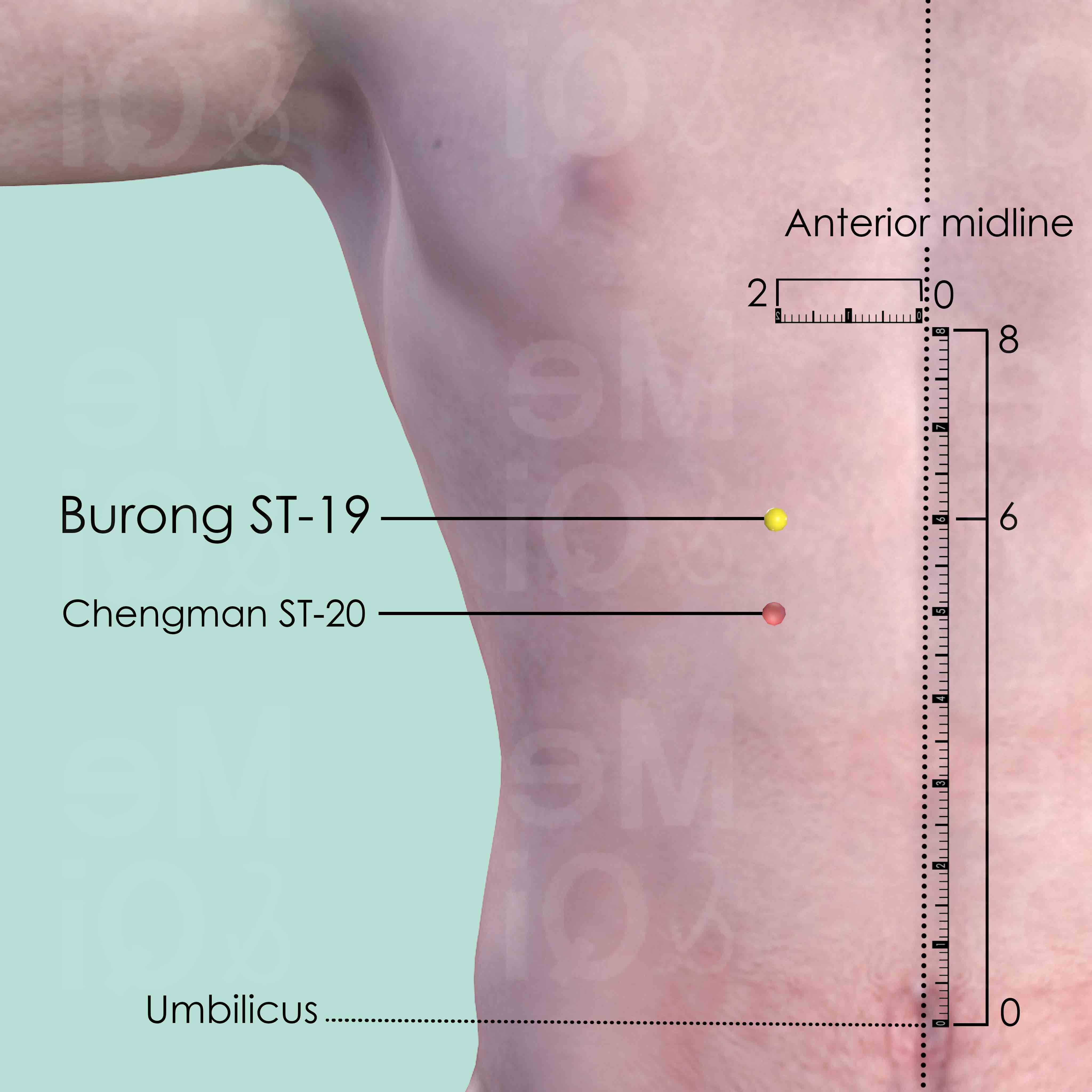
Burong ST-19
2 cun below the sternocostal angel and 6 cun above the umbilicus, 2 cun lateral to the anterior midline.
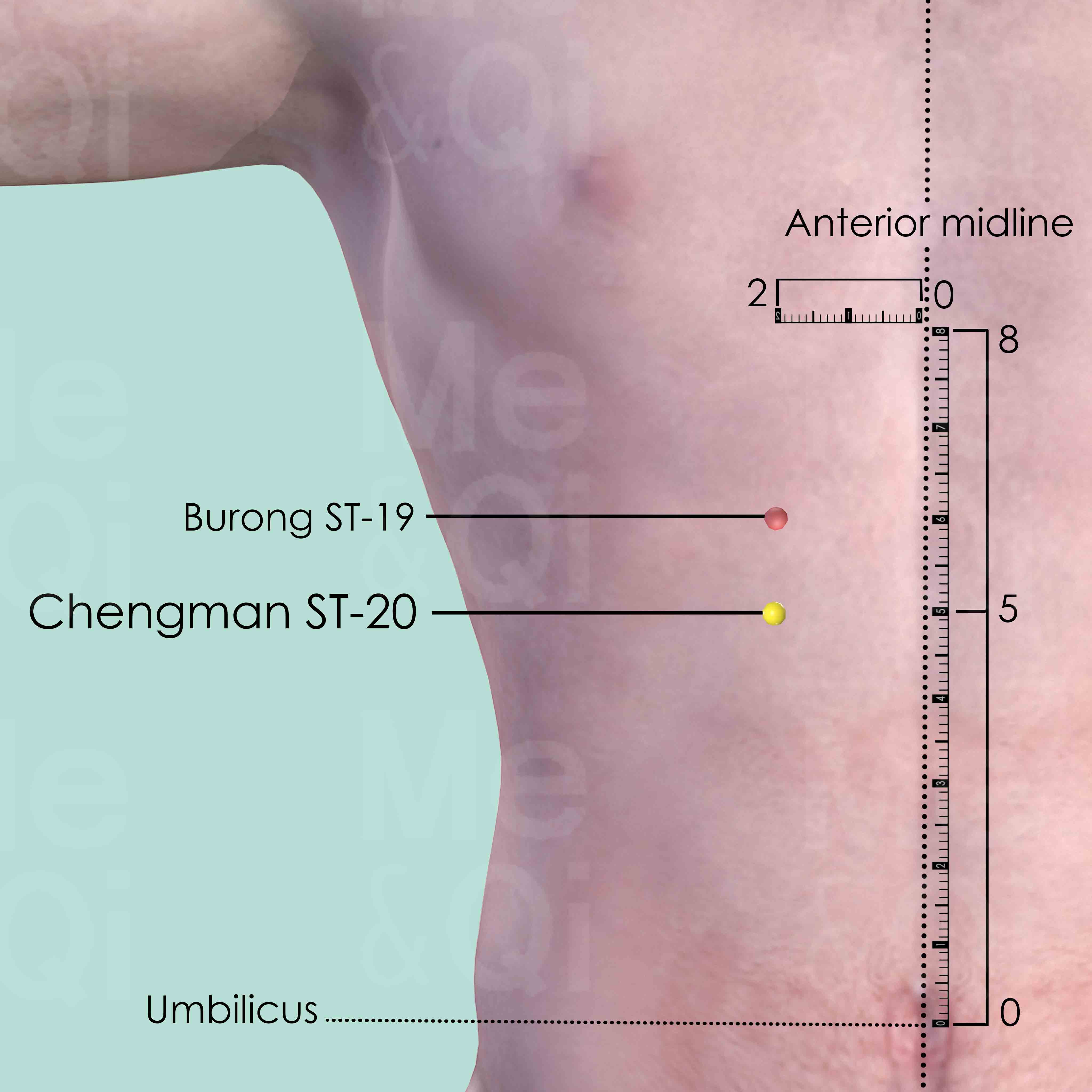
Chengman ST-20
5 cun above the umbilicus and 2 cun lateral to the anterior midline, or 1 cun below Burong ST-19.

Liangqiu ST-34
2 cun above the upper-lateral border of the patella, on a line between the upper lateral patellar border and the anterior superior iliac spine (ASIS).
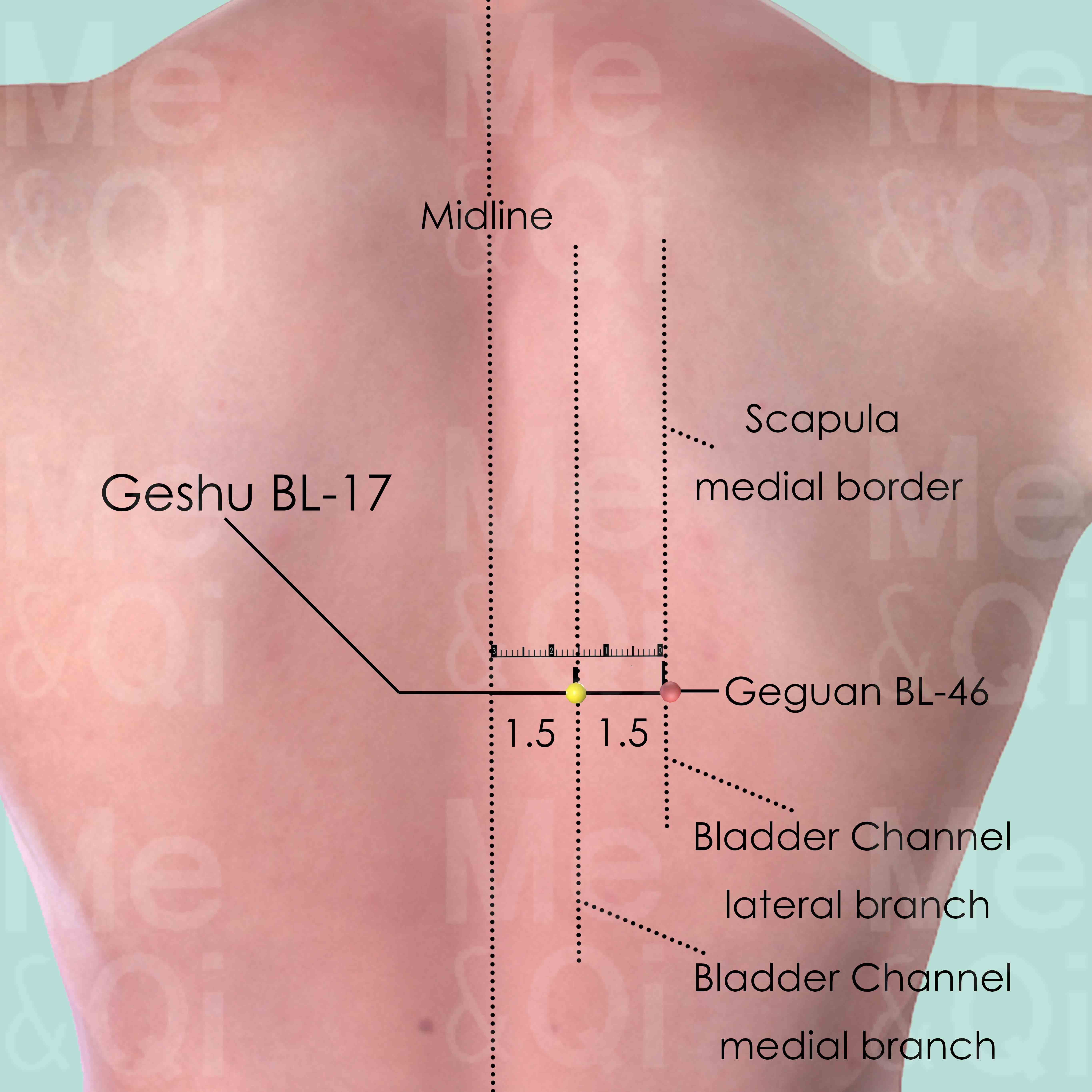
Geshu BL-17
1.5 cun lateral to the lower border of the spinous process of the 7th thoracic vertebra (T7).
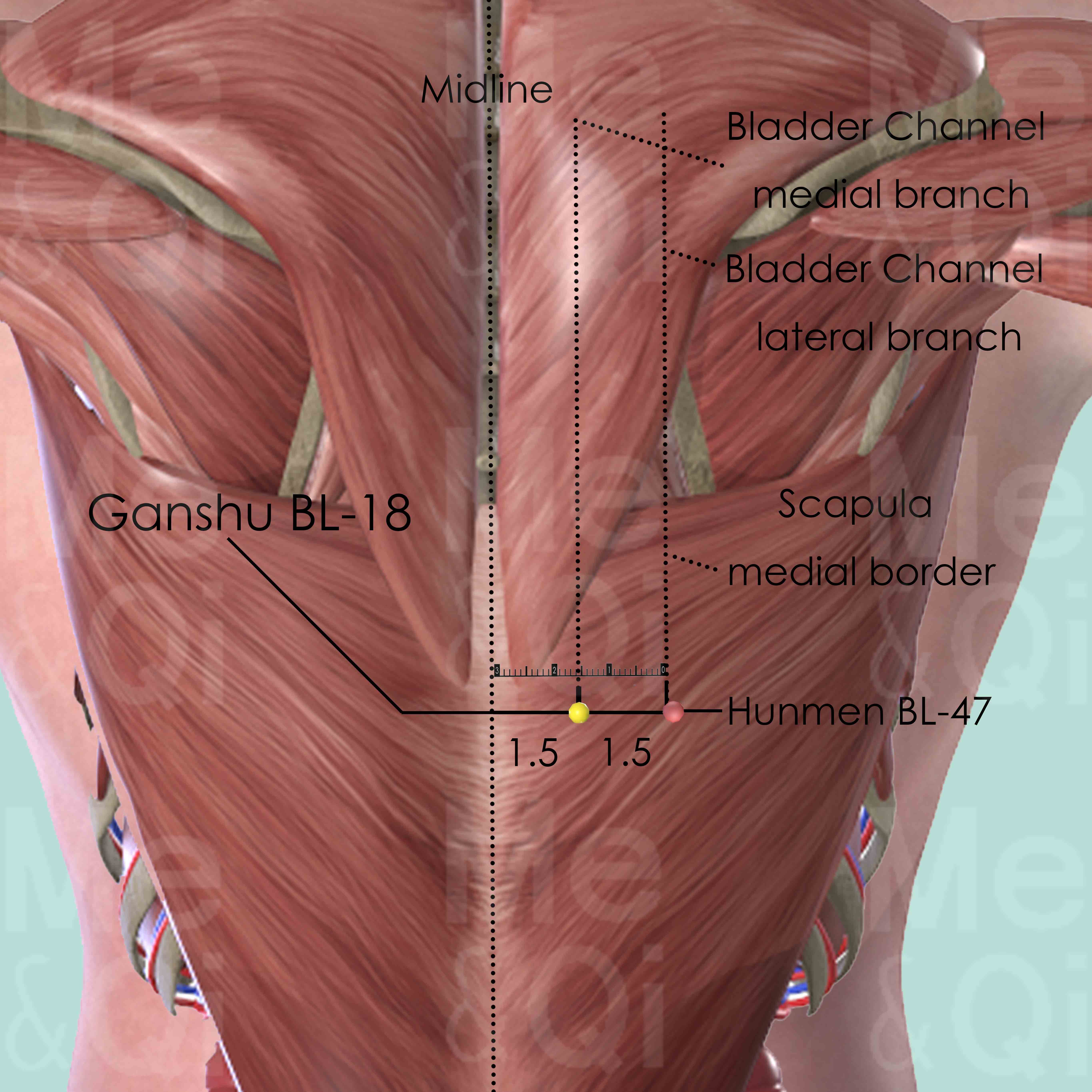
Ganshu BL-18
1.5 cun lateral to the lower border of the spinous process of the 9th thoracic vertebra (T9).
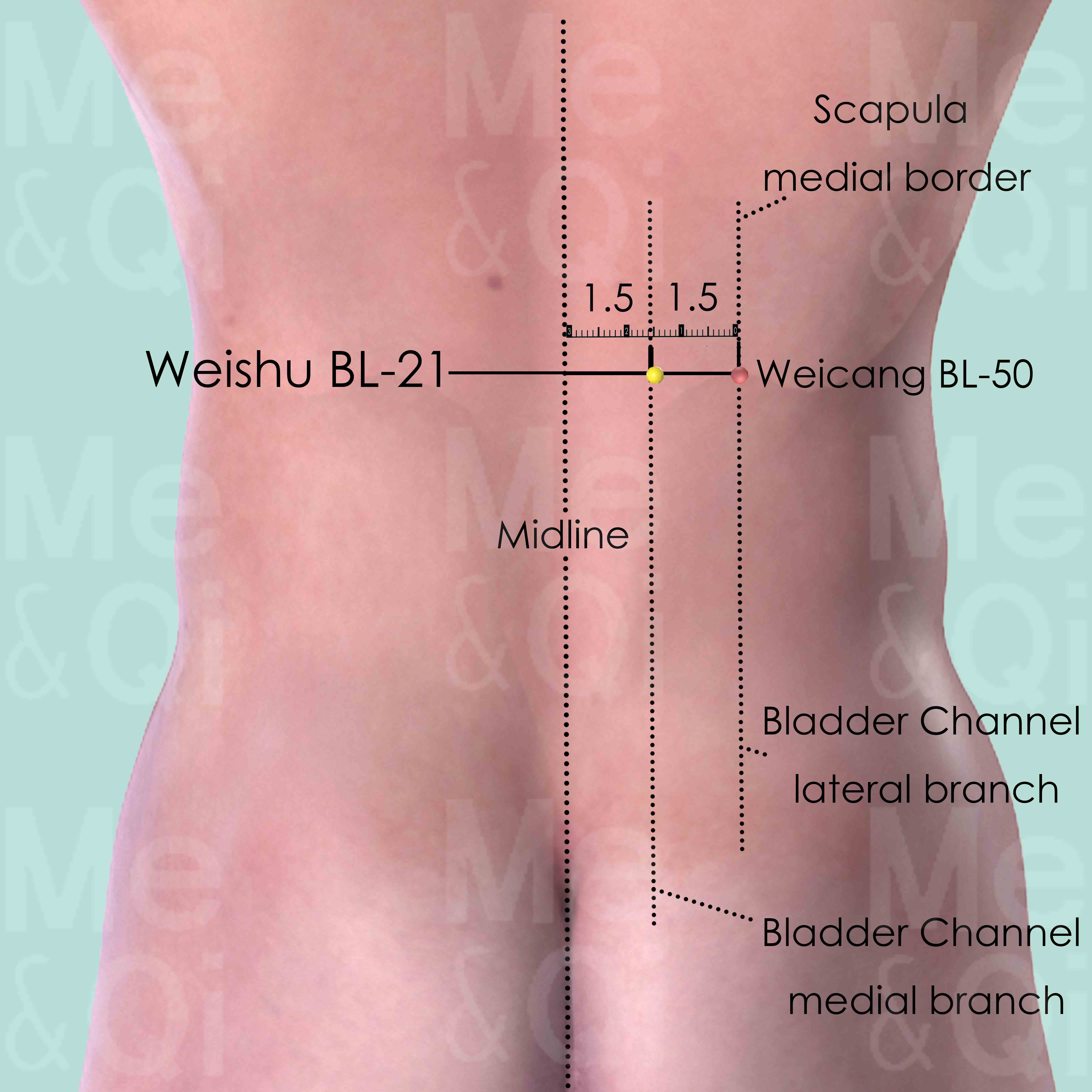
Weishu BL-21
1.5 cun lateral to the lower border of the spinous process of the 12th thoracic vertebra (T12).
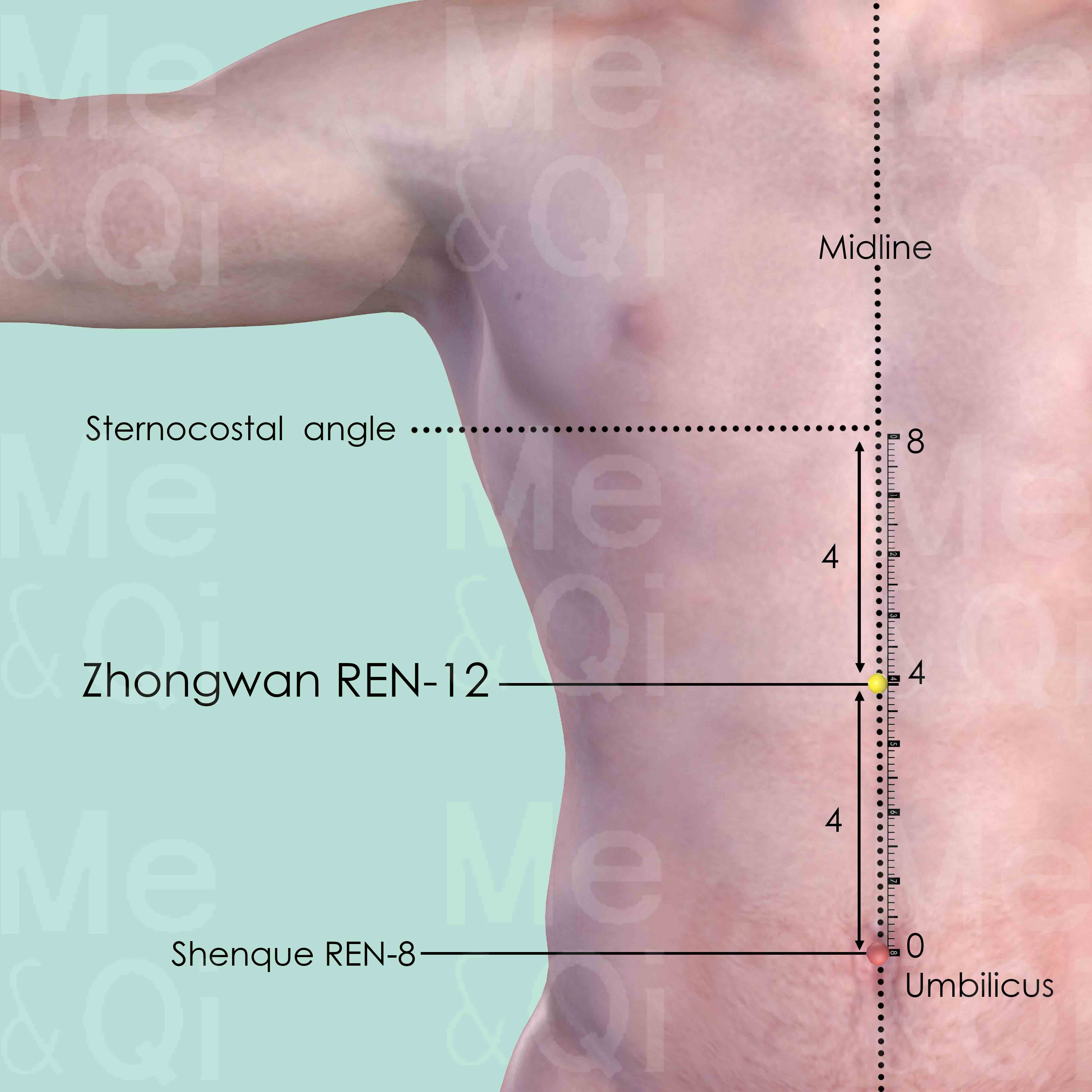
Zhongwan REN-12
On the midline of the abdomen, 4 cun above the umbilicus and 4 cun below the sternocostal angle.
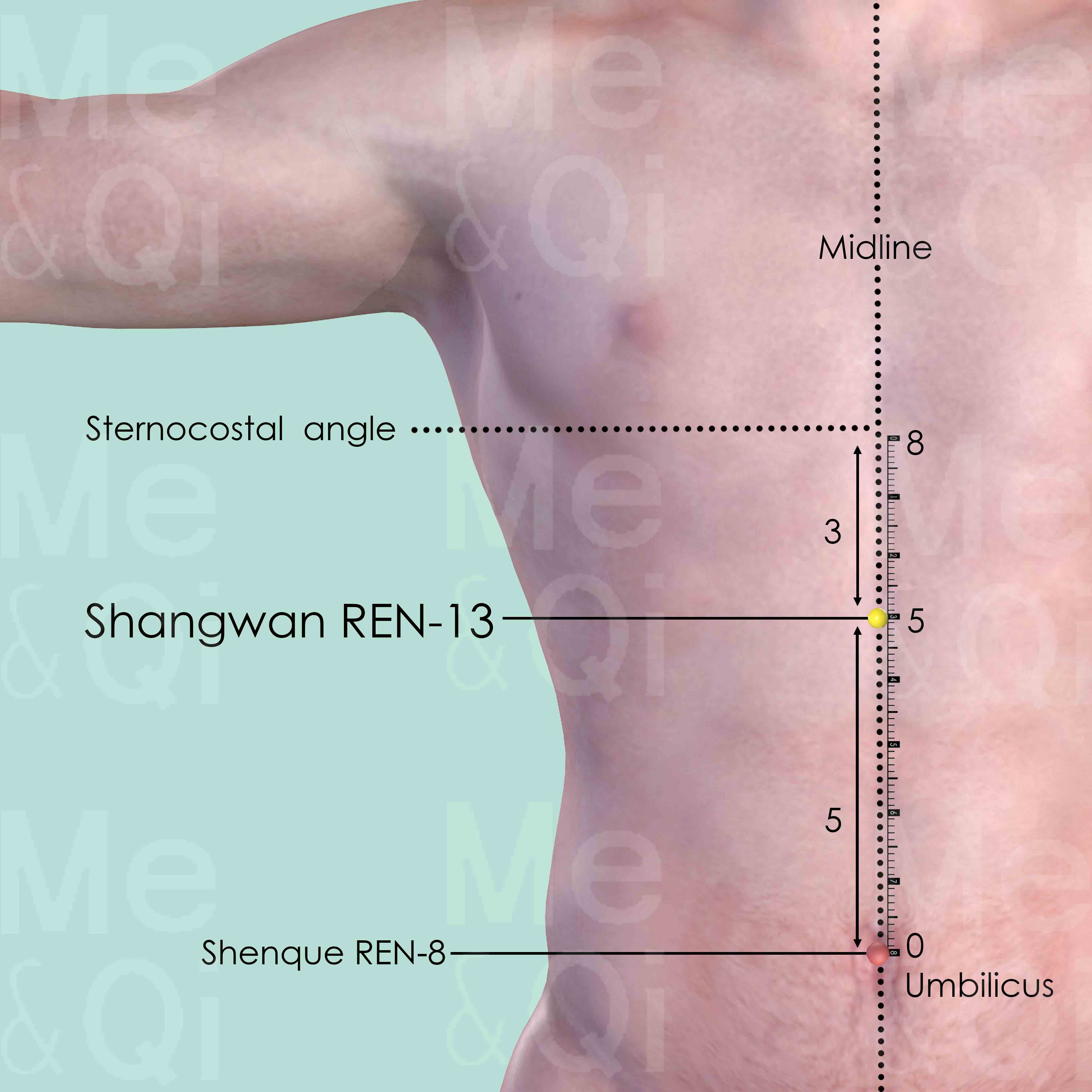
Shangwan REN-13
On the midline of the abdomen, 5 cun above the umbilicus and 3 cun below the sternocostal angle.
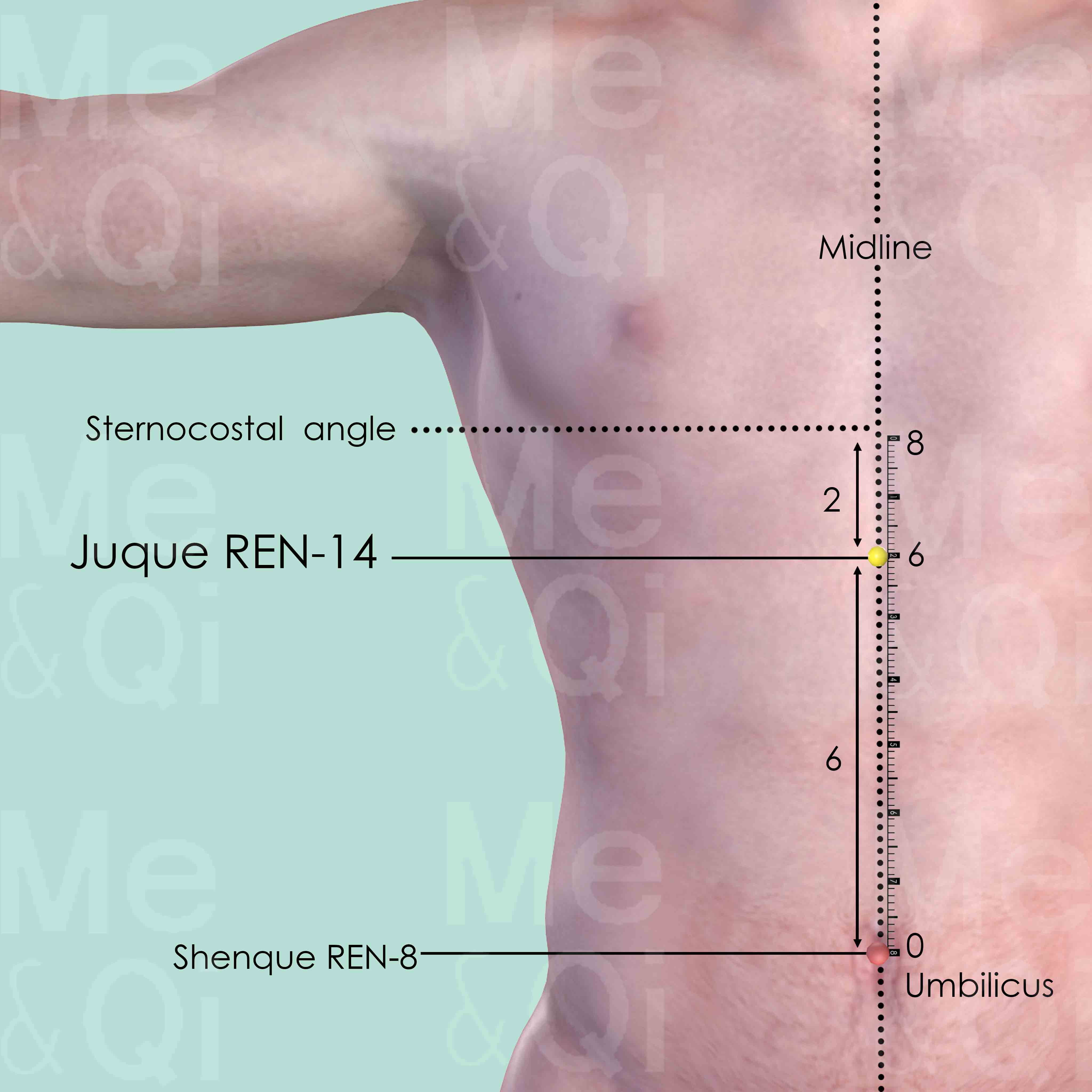
Juque REN-14
On the midline of the abdomen, 6 cun above the umbilicus and 2 cun below the sternocostal angle.
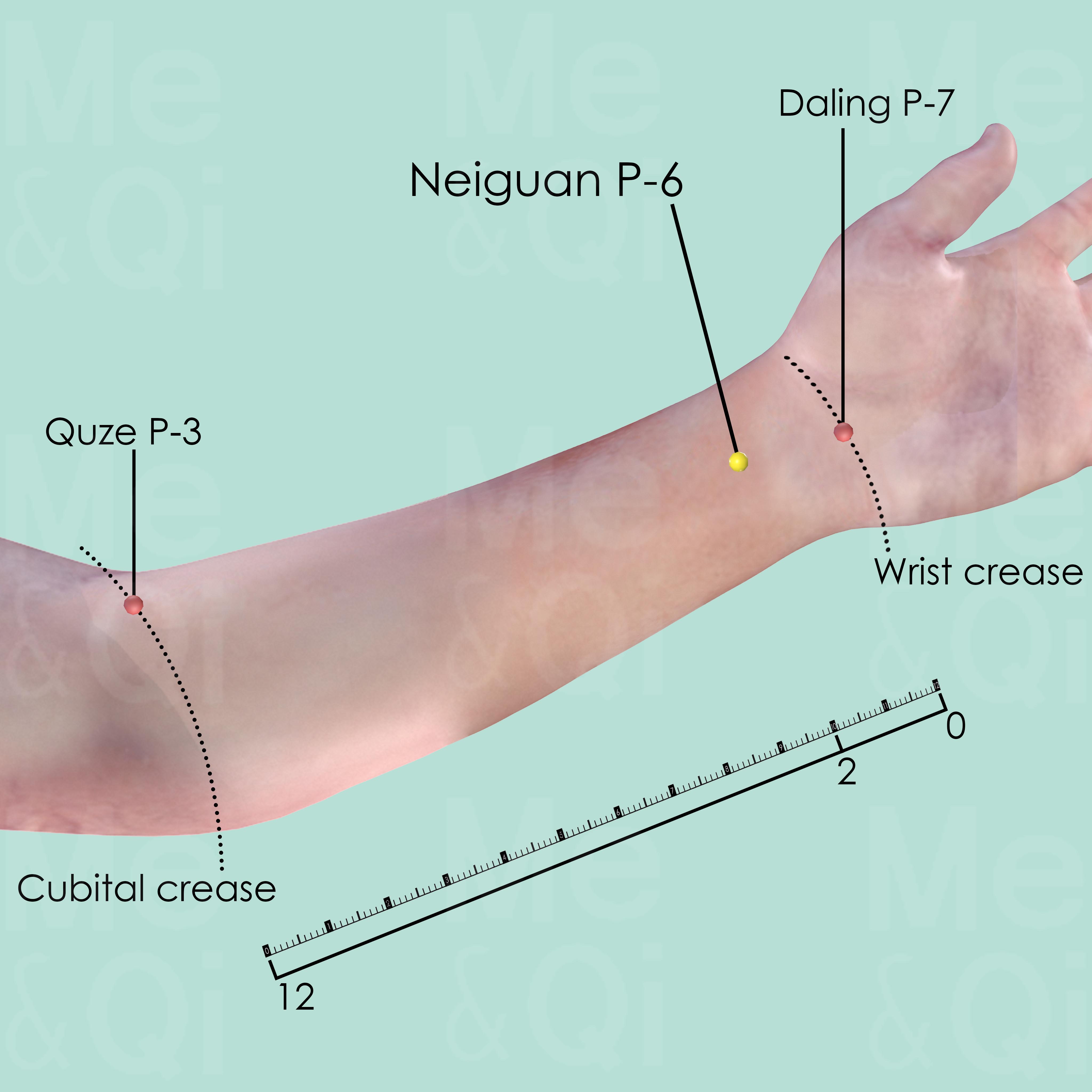
Neiguan P-6
2 cun above Daling P-7 on the transverse crease of the wrist, between the tendons of palmaris longus and flexor carpi radialis muscle.
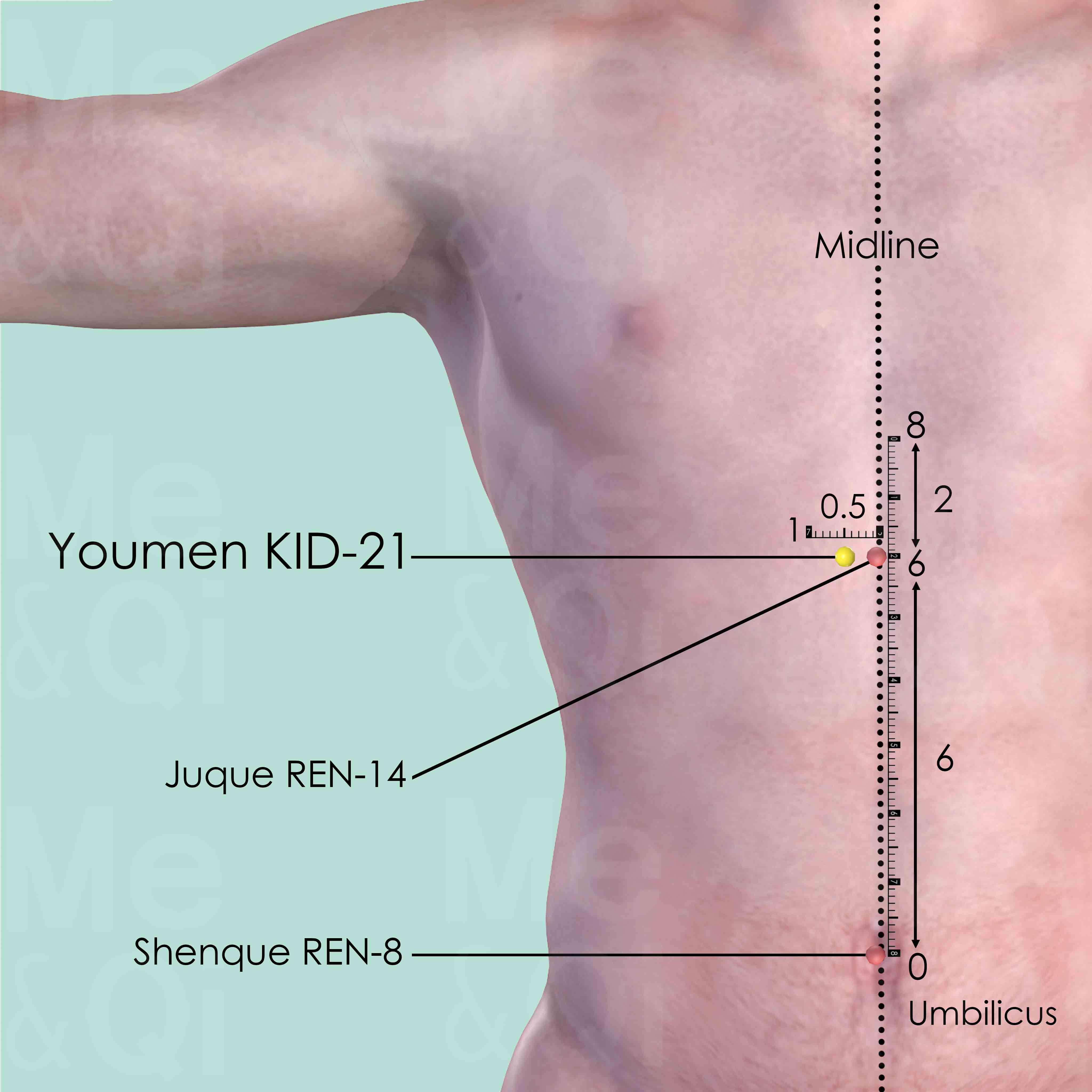
Youmen KID-21
6 cun above the umbilicus and 2 cun below the sternocostal angle, 0.5 cun lateral to the anterior midline.
